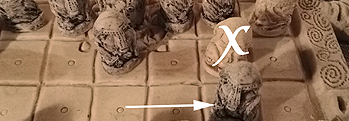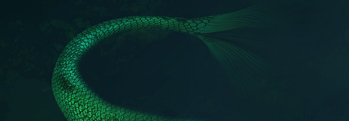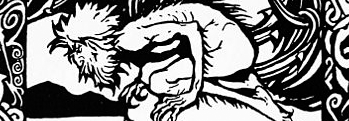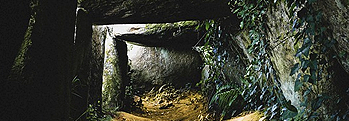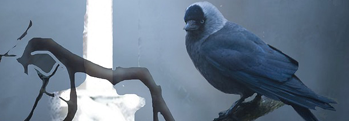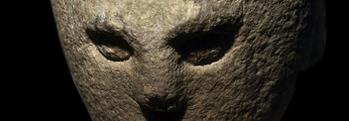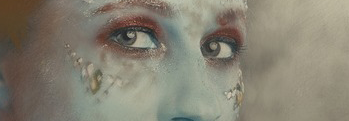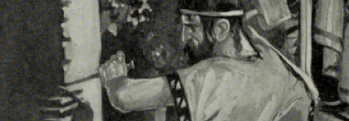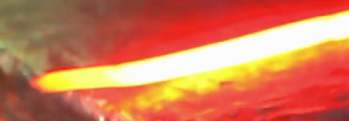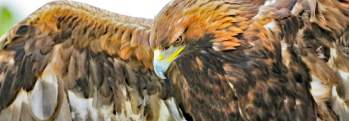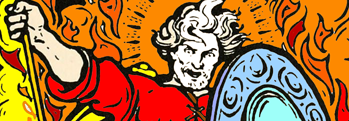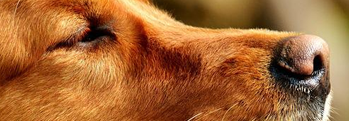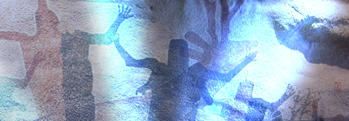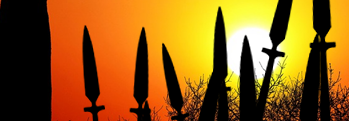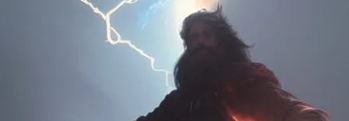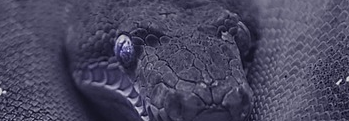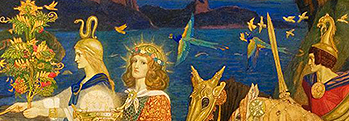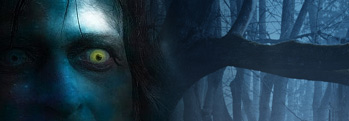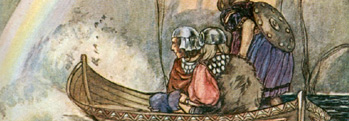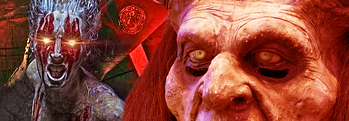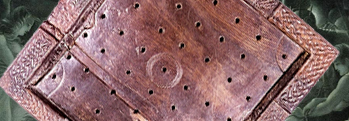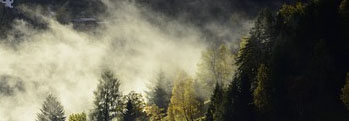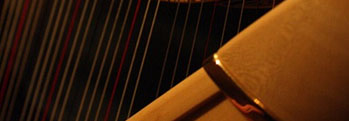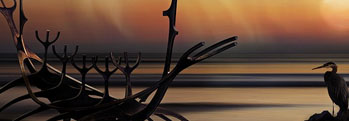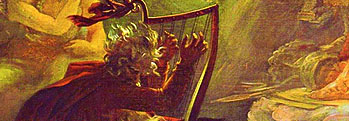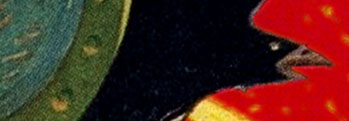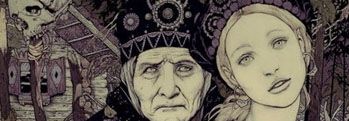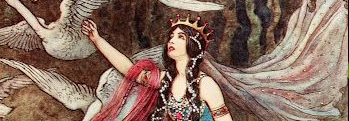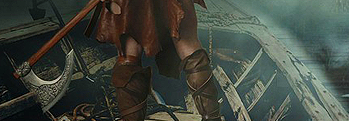The Fomorians
Irish and Celtic myths and legends, Irish folklore and Irish fairy tales from the Mythological Cycle
Antediluvian half-demons of the netherworld
 No tale of ancient Ireland could be complete without mentioning the Fomorians, dreaded foes of the Tuatha Dé Danann and all who came to conquer Ireland. The meaning of their name is debated even today, although most agree that the first part, fó, means “from below” or “nether” and the latter part means “the sea”, “demons” or “giants”.
No tale of ancient Ireland could be complete without mentioning the Fomorians, dreaded foes of the Tuatha Dé Danann and all who came to conquer Ireland. The meaning of their name is debated even today, although most agree that the first part, fó, means “from below” or “nether” and the latter part means “the sea”, “demons” or “giants”.
And when you read of their deeds and doings, you could be forgiven for thinking all three were accurate.
Descriptions of the Fomors and their behaviour are strange and conflicting in the old legends – some tales tell that they were phenomenally ugly, and celebrated this ugliness, even driving out children who were normal in appearance, taking deformities as a mark of favour from their dark gods. One Fomor might have a large arm and a small arm, while another might have two heads, and another three eyes!
Other tales claim they were born whole enough but became strange in mind and appearance after exposure to the occult ur-light, degenerative radiances and blasphemous smokes of their eldritch rituals.
Some believed that they had the heads of goats, although it may be more likely that they wore goat masks, and others that they were related to the drowned titans of Enoch, the Nephilim. In the Book of Invasions it is said they had but one leg, one eye and one arm! Of course this is a misunderstanding of the crane-stance, a posture they struck when they were casting spells and working magical mischief against their enemies.
And theirs was the old magic, the power of the wyrm they held as a great mystery, that antediluvian sorcery from before the great floods which destroyed the ancient world in its corruption and wickedness. Legends tell that they could control the weather, the mists and the waves of the ocean, bring blight upon the crops, sickness upon the cattle, and plague from their festering pits upon the people. The icy blasts of winter were theirs to command, and deadly spirits from chthonic halls could they summon to question about the past or future, or events far distant.
Balor of the evil eye was one of their great kings, and for this power was he named! So vast was his form and terrifying eye that it took four men to lift the lid, since he kept it closed while amongst his own folk.
 It was always covered with seven cloaks to keep it cool. When it was needed, he took the cloaks off one by one. At the first, ferns began to wither. At the second, grass began to redden. At the third, wood and trees began to heat up. At the fourth, smoke came out of wood and trees. At the fifth, everything got red hot. At the sixth and seventh, the whole land caught fire. With his eye he is said to have blasted the islands west of Scotland, which remain bleak and haunted to this day.
It was always covered with seven cloaks to keep it cool. When it was needed, he took the cloaks off one by one. At the first, ferns began to wither. At the second, grass began to redden. At the third, wood and trees began to heat up. At the fourth, smoke came out of wood and trees. At the fifth, everything got red hot. At the sixth and seventh, the whole land caught fire. With his eye he is said to have blasted the islands west of Scotland, which remain bleak and haunted to this day.
Even, it was said, his gaze could turn men to charred stone!
They were the first in Ireland, arriving with two hundred men and six hundred women, surviving on wild birds and fish, and may have been responsible for the building of many of the earliest megalithic monuments, those aligned to the equinoxes rather than the solstices, the moon rather than the sun.
Their king Cichol Gricenchos made war upon the people of Partholón who arrived after the ice and floodwaters receded, eventually defeating the Partholónians with a vile and pestilent plague brewed in the cauldrons of his ruin-workers.
After that, the mighty Lord Nemed arrived with his people, and red-handed sword-songs once again rang through the forests and mountains of Ireland. Nemed was victorious, slaying the two kings of the Fomors whose names were Gann and Sengann, driving back the Fomors, but when he died they returned to claim their vengeance!
The new kings were called Conand son of Faebar and Morc son of Dela, who had their fastness in a strong place to the far north, on Tory island. These two warlords enslaved the Nemedians and demanded a heavy tax – two thirds of their cattle, grain and children, to be delivered each Samhain at the plain known as Mag Cetne!
Fergus Lethderg, the son of Nemed, wasn't going to put up with that for long and soon he raised an army of more than thirty thousand to make war upon the Fomors, destroying the tower of Conand, called Torinis Cetne, but Morc mustered a vast fleet and blackened the sky with poison arrows. The slaughter was terrible, aided not a little by another dark plague.
Only sixty of the tribe of Nemed survived that war, fleeing to different parts of the world in a single ship, and the Fomors fared little better. Of those Nemedians who escaped, half went to Greece and Athens where they again lived under heavy tribute until they returned to Ireland, and the other half became a wandering tribe of warriors call the Tuatha Dé Danann, who learned the sorceries of the east and north and honed their warlike skills as they travelled in exile.
The Fir Bolg were the first to return to Ireland, tiring of the treatment they received from the Greek masters who gave them harsh rocks upon which to live, forcing them to cover their islands in soil by hand. They didn't have much trouble with the Fomors, staying out of the northern reaches of Ireland, but then the Dé Danann returned and with them came the raven-feast and the war-wail!
They fought the Fir Bolg for domination of Ireland and defeated them in the first battle of Moy Tura, but their conquest brought the malevolent gaze of the Fomors to bear. Still weak after the battle and with their great king Nuada dethroned due to losing an arm, the Dé Danann held council and decided it would be best to make peace with the Fomors, for fear of annihiliation.
In these tales we learn that not all of the Fomors were hideous in appearance or vicious of temperment. One of their kings, Elatha, was called ”the beautiful Miltonic prince of darkness with golden hair,” and songs praise his wisdom, kindness and mercy, associating him with light and the sun. He travelled across the sea in a silver ship and wore clothes of gold and five gold torcs.
There are legends which say he was the father of Bres, who came to replace Nuada as king of the Dé Danann, by Ériu of the Tuatha Dé Danann, as well as Delbaeth, Ogma, Elloth who was grandfather of Manannán mac Lir, and the Dagda by an unnamed mother, but many of these claims are confused and uncertain.
 That he was father of Bres the beautiful is in no doubt however, even though Bres became a king whose reign the Tuatha were to regret! For seven years, the half-Fomor, half-Dé Danann Bres led the people and brought them great sorrow, enslaving them and taxing them heavily as had been done to the Nemedians.
That he was father of Bres the beautiful is in no doubt however, even though Bres became a king whose reign the Tuatha were to regret! For seven years, the half-Fomor, half-Dé Danann Bres led the people and brought them great sorrow, enslaving them and taxing them heavily as had been done to the Nemedians.
Ogma was forced to carry firewood, and the Dagda had to dig trenches around forts. He neglected his duties of hospitality, the Tuatha Dé complained that after visiting his house their knives were never greased and their breaths did not smell of ale. Cairbre, poet of the Tuatha Dé, composed a scathing poem against Bres, which was the first satire in Ireland, and everything went wrong for him after that.
Eventually they had enough and revolted, dethroning Bres and meeting the Fomors in the second battle of Moy Tura!
Nuada's arm had been restored by the forbidden necromancy of the healer Miach with the help of his sister Airmed, and he led the rebellion alongside Lugh, another half-Fomor, grandson of none other than Balor of the evil eye! The earth and sky groaned with the bloody deeds done that day, and Nuada fell to Balor's witchcraft, but it was Lugh's sling stone that destroyed the havoc-wreaking eye of Balor, slaying the dark king in an irradiant explosion, winning the battle and war.
Not alone did the hero and champion Nuada fall on that field of battle, for Cethleann of the ravenous teeth, the prophetess wife of Balor who had foretold his death, struck the Dagda with a poisoned dart in the midst of battle, although it took him a hundred and twenty years to die afterwards!
Such was the upheaval of nature and the intrusion of the unnatural at Moy Tura that when the battle was done, Orna, the sword of Elatha, which had been wielded savagely by the Fomorian champion Tethra, was taken by Ogma and told of everything it had done. It spoke of how Tethra had been forced into the realm of death, Moy Mell, where he now ruled beyond the sea to the west or southwest of Ireland.
In Echtra Connlae, a fairy woman appeared to Connla and said:
The living, the immortal call to you;
They summon you to the people of Tethra
Who behold you every day
Connla fell in love with the woman and followed her to an Otherworld island populated by women.
In Immacallam in Dá Thúarad, Nede, the precocious poet, was asked what he was undertaking. He answered:
Not hard (to say): (to go) into the plain of age,
into the mountain of youth,
into the hunting of age,
into following a king (death?),
into an abode of clay,
between candle and fire,
between battle and its horror;
among the mighty men of Tethra
among the stations of...
among the streams of knowledge.
Bres was found alone on the battlefield and captured, to be brought before the wrathful Lugh to answer for his mischief. Some tales say he was pardoned so long as he taught them the ways of agriculture, while others recount a more grisly end for Bres the beautiful...
As written in the Dindsenchas, Lugh made three hundred wooden cows and filled them with sewage which was then “milked” into pails and offered to Bres to drink. Bres, who was under an obligation not to refuse hospitality, drank it down without flinching, and died choking on it.
 After their defeat, the Fomors retreated to the shadows and darkness of the ocean, the coasts and the deep places, although they do show up from time to time in more recent myths and legends, such as the Training of Cú Chulainn:
After their defeat, the Fomors retreated to the shadows and darkness of the ocean, the coasts and the deep places, although they do show up from time to time in more recent myths and legends, such as the Training of Cú Chulainn:
“Then they parted from each other, and Cú Chulainn went and looked forth on the great sea. As he was there he beheld a great assembly on the strand nearest to him, to wit, a hundred men and a hundred women seated in the bosom of the haven and the shore, and among them a maiden shapely, dear and beautiful, the most distinguished damsel of the world's women, and they a-weeping and lamenting around the damsel.
Cú Chulainn came to the place and saluted them. 'What is this sorrow or the misery upon you?' says Cú Chulainn.
The damsel answered and this she said: ‘A royal tribute which the tribe of Fomorians carry out of this country every seventh year, namely, the first-born of the king's children. And at this time it has come to me to go as that tribute, for to the king I am the dearest of his children.’
‘What number comes to lift that tribute?’ asks Cú Chulainn. ‘Three sons of Alatrom of the Fomorians,’ she answers, ‘and Dub, Mell and Dubros are their names.’
Not long had they been at those talks when they saw the well-manned, full-great vessel approaching them over the furious waves of the sea. And when the damsel's people saw the ship coming, they all fled from her, and not a single person remained in her company save only Cú Chulainn.
And thus was that vessel: a single warrior, dark, gloomy, devilish, on the stern of that good ship, and he was laughing roughly, ill-fatedly, so that every one saw his entrails and his bowels through the body of his gullet.
‘What is that mirthfulness on the big man?’ asks Cú Chulainn.‘Because,’ says the damsel, ‘he deems it excellent that thou shouldst be an addition to his tribute in this year rather than in any other year.’
‘By my conscience,’ says Cú Chulainn, ‘it would not be right for him to brag thus regarding me if he knew what would come of it.’ Then the big man came ashore to them into the strand, and stretched forth his long, sinewy, hideous arm to seize Cú Chulainn in the very front of his royal tribute.
Straightway Cú Chulainn raised his right hand, and bared his sword, and gave a blow to the big man and struck off his head, so that he was the first that fell by Cú Chulainn after having completed his training. And thereafter the other two fell by him, and he left them thus, neck to neck.”
Not a man to suffer fools gladly was Cú Chulainn! Tory Island can be found on the map below.
More Stories from the Mythological Cycle
We are delighted to be able to present to you the rules of Fidchell, the Irish game of kings! This game can be purchased, but it's easy to get started and try it out for yourself. All you need is a 7 x 7 board, which can be squares or pins marked out - even on paper - 16 white or attacker pieces, a king piece, and 8 darker-coloured defender pie ... [more]
Times were hard in Ireland not so long ago, and harder yet they were before that – many’s the family was cast out of their houses for being unable to pay their rent! One such was poor Finian O’Toole, the kindly father of nine children who found himself evicted by the cruel English landlord in the parish of Kilmoe. Now it was th ... [more]
There is a tale, one of the oldest stories among the many very ancient stories of Ireland, of a man who returned to life as a man thousands of years after he first walked the earth. His legend was found in an eleventh century manuscript called Lebor na hUidre, which means The Book of Dun Cow, and it was written there by the followers of an early ... [more]
It’s a not uncommon belief that the women of Ireland in the ancient days were quiet and kept to themselves, letting the men do all the great deeds and win all the fame – but nothing could be further from the truth! From that day to this Irish women were and remain wild and fearless, willing to go to lengths as great as any man for victo ... [more]
Of great renown are the feats and deeds of the ancient heroes of Ireland, and still to this day they echo through our legends where such tales are told. But of scarce less fame were the weapons they bore, implements of glory and terror, bound to ancient spirits and clasping lightning within their shimmering length, wielded with scarcely imaginable ... [more]
The Tuatha De Danans By the force of potent spells and wicked magic, And conjurations horrible to hear, Could set the ministers of hell at work, And raise a slaughtered army from the earth, And make them live, and breathe, and fight again. So it was written in Keating's General History of Ireland, considered by many to be the definitive ... [more]
Her name was Clíona or Clíodhna and she was one of the most beautiful women of the Tuatha Dé Danann, that vanished sorcerous race whose legends echo still from one end of Ireland to the other. Some even say she was the most beautiful woman in the world, and she was worshipped as a goddess by the pagans of Ireland who followed t ... [more]
Many are the tales told of Lugh, the mightiest king of that ancient and mystical sorcerer race of Ireland, the Tuatha Dé Danann, but only one is told of his death. Now Lugh, lord of many warriors, had four wives, which back in those days wasn’t too unusual, and their names were Echtach, daughter of white-toothed Dagda, Englec, Ná ... [more]
Just as happens today, people in ancient Ireland had legal disputes and complaints they would bring before their courts, and the judge or king would try to make sense of what had happened and hand down a fair decision. But also just as happens today, there were situations where it was one person’s word against another, or there wasn’ ... [more]
The old stories of Ireland, some of the oldest in the world, tell of great ancients – almost immortals! – whose span of life stretched many thousands of years. Legends tell of their spirits passing from one body to the next, or upon occasion, staying in the one body for millennia, watching the tides of man and beast come and go. Such ... [more]
One of the chiefest and most powerful kings among the mystical Tuatha Dé Dannan was the one called Dagda, or Dagda Mór, which means “of shining skills”. He had other names too, such as Eochu the horseman, Ruad Rofhessa, lord of great knowledge, Dáire the fertile one and Aed, he of the fiery temper. Others yet called ... [more]
The Irish Brehon law codes are said to be the earliest fully developed legal system in Europe, but long before the Brehons were laid down there were earlier laws and all were subject to them, from the lowest to the highest! Women could hold their own property, were not themselves considered property, and could seek an education and improve their ... [more]
No tale of ancient Ireland could be complete without mentioning the Fomorians, dreaded foes of the Tuatha Dé Danann and all who came to conquer Ireland. The meaning of their name is debated even today, although most agree that the first part, fó, means “from below” or “nether” and the latter part means “t ... [more]
Many of the oldest records of Irish mythology and legend, which you might truthfully say are a history of prehistory, tell that the first people to arrive in Ireland were led by the lady Cessair when she fled to this land to escape the coming flood. The idols which had whispered through veils of midnight smoke that Ireland was a land untouched by p ... [more]
Throughout the old stories of Ireland are scattered mentions, and sometimes even descriptions, of some of the spells and rites used by both the Tuatha Dé Danann and those who came after them, the Gaels or Milesians, as they are sometimes known. Tales of these wondrous and mysterious feats of sorcerous skill may seem strange to us, but to the ... [more]
It was a warm and balmy summer's night, heavy with the fragrances of heather and honeysuckle, when Aengus, son of Dagda, awoke to find a beautiful young woman approaching him where he had slept. He was immediately taken with her grace and elegance, and his heart yearned for her, but when he tried to speak, she vanished! He stayed in his bed ... [more]
The river Barrow, like many rivers in Ireland, was given its name in ancient times. Few now know it once had another and very different name however, for it was when Dian Cécht walked the world, the healer of the Tuatha De Danann, that this river was first named! Dian Cécht, whose name meant swift power or swift potion, depending o ... [more]
A thousand years before the Olympic games were founded, the Tuatha De Dannan had arrived in Ireland and defeated the Fir Bolg, establishing their place on the Emerald Isle. The mighty queen Tailtiu had married Eochaid mac Eirc of the Fir Bolg, but he was killed during the invasion of Ireland by the Tuatha, so the leader of the invaders took her for ... [more]
In ancient times the Gaels would hold great festivals at different seasons of the year, such as the Tailteann Games, Tlachtga, Raigne and Lughnasadh, and it was at the beginning of August, every three years, that the festival of Carmun would be held during the festival of Lugh. Mighty were the celebrations held, with the racing of horses and the ... [more]
Long ago it was the time of the Tuatha De Danann in Ireland, and they were troubled by strife from beyond the Emerald Isle and within it. One of their mightiest warriors whose name was Lugh of the Long Hand heard that their demonic enemies from the sea, the Fomorians, had landed at Eas Dara, so he hopped up on Aonbharr, a horse which could gallop a ... [more]
Some of the most ancient Irish myths and legends tell of the Bocanachs and the Bananachs, known to the people of Ireland as fierce spirits of the air that were drawn to scenes of battle and bloodshed. Whenever armies gathered to test their might, the sky overhead would be filled with shrieking demons dancing to the sounds of swords clashing and blo ... [more]
Woven through many Irish stories, myths and legends is the ancient game of Fidchell, which means “wisdom of the wood”. It's said that it was invented by none other than Lugh of the Tuatha De Dannan, and predates chess by many centuries. Fidchell held a central role in the celebrations of Lugh, and at Samhain festivities as well, ... [more]
Well known is the ancient tale of the Children of Lir, and how two of the three of Bodb Dearg's daughters by Oilell of Aran married Lir to keep the peace in Ireland, between the rival chieftains of the Tuatha De Dannan. But less well known perhaps is the story of the daughter of the Bodb and one of her admirers, Cliach the Harpist. Cliach pl ... [more]
After the second battle of Moy Tura, Nuada the High King of the Tuatha De Danann was grievously injured, and as it was the law among their people that a king must be whole of body, Dagda Mór took his place. Mighty Dagda, of whom the ballads are sung, he was called the father of the Tuatha, the lord of knowledge, the many-skilled, th ... [more]
It is in the nature of fairytales and legends passed down from generation to generation that they might sometimes change and shift to fit the lives of the people of the time, and the more mysterious the figure the more legends accrue to it! And so it is with Donn of the Dead, king of the dead at the red tower of the dead, whose three sons cried &ld ... [more]
It was at the dawning of the world when the fair folk walked in broad daylight as bold as you and I, before the coming of the Milesians with their bitter iron blades and earthen ways, it was the time when magic was wrought and druidry had power, when heroes gave battle to gods and the titanic children of Seth still troubled the dreams of Heaven, it ... [more]
The raven has long been an omen of ill-tidings around the world, bearer of bad news and warnings, but in Ireland it was known once as a servant of the fairy Morrigan, or the raven was herself in person! She it was whose name meant the Great or Ghost Queen, from the old words for fear and greatness. Some will tell you earnestly that she was a god ... [more]
Long ago, in the time of the Tuatha Dé Dannan, one of their number became the high king of all Ireland, and his name was Eochaid Ollathair. He was a powerful magician of that sorcerous race, and by his workings he could change the weather and ensure the harvest was plentiful, as well as many other things. His wealth was vast and he was mu ... [more]
It was in the time of legends and heroes, when the Tuatha Dé Dannan had determined to go into their deep halls beneath the hills and mountains of Éireann the green, that the Dagda mór had fallen at the second battle of Moy Tura. With his slaying a new leader had to be elected and that was decided by the Tuatha to be the Red Cro ... [more]
And so it was when dragons still flew and champions walked the earth that the men of the Fir Bolg had lordship over all of Ireland. They had left Ireland centuries before due to the violence and heavy tribute demanded by the Fomorians, travelling far and wide until they came to the distant land of Greece. Although they made agreement and treaty ... [more]




